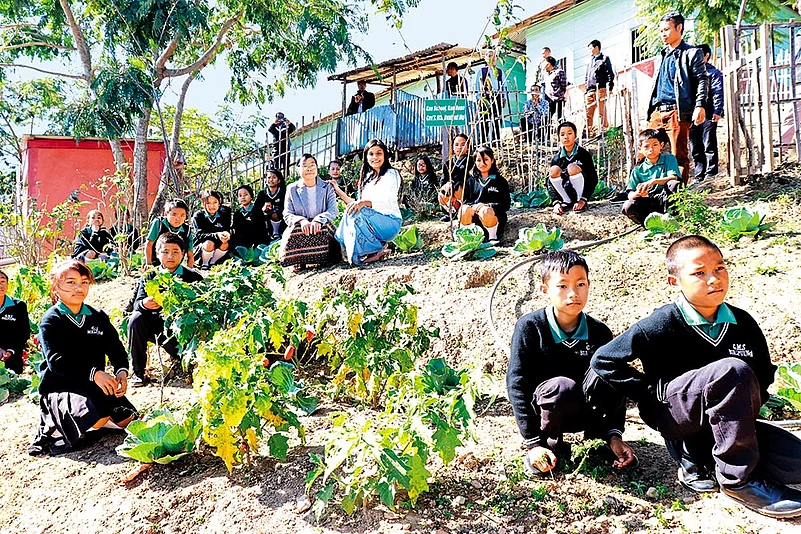Lawngtlai has 35.3 per cent stunted, 21.3 per cent underweight and 5.9 per cent severely wasted children under the age of five—highest on all counts in Mizoram. No surprises here: the district faces a lack of fresh produce because supplies from its food source, nearby Assam, are erratic. But Lawngtlai is now a nutritional role model and Shashanka Ala, its deputy commissioner, is responsible for the transformation.
Ala motivated stakeholders to come together, generate compost, provide high-yielding seeds of local fruits and vegetables, and create nutrition gardens in each school to achieve self-sufficiency and combat malnutrition. This unique project is called Kan Sikul, Kan Huan (My School, My Farm). At anganwadis and schools, officials identified space for a small kitchen and at least 100 sq ft of land for a garden. The district administration provided seeds, compost and gardening equipment. The mid-day meal coordinator had to ensure that children ate largely from their gardens. Agriculture officials gave hands-on training to teachers in every school. Principals were made responsible for ensuring children’s participation such that each child got to spend substantial time in the garden every day.
The pilot project has been a resounding success with encouraging results. But Ala has a sustainable and scalable nutrition plan: schools must consume local, seasonal, organic fruits and vegetables every day; a meal a day comprising hot vegetable stew with rice at the least for every child; and support to children to grow their own vegetables and create compost.
The first phase of the programme, covering 213 schools and anganwadis, was launched in July 2019. Ala is now hard at work to cover all 776 schools in the district, benefitting 15,042 children. “We have a steady flow of vegetables,” she says. “Schools can cook nutritious mid-day meals with food they grow themselves instead of waiting for trucks from Silchar or Aizawl.”
Also Read:
















